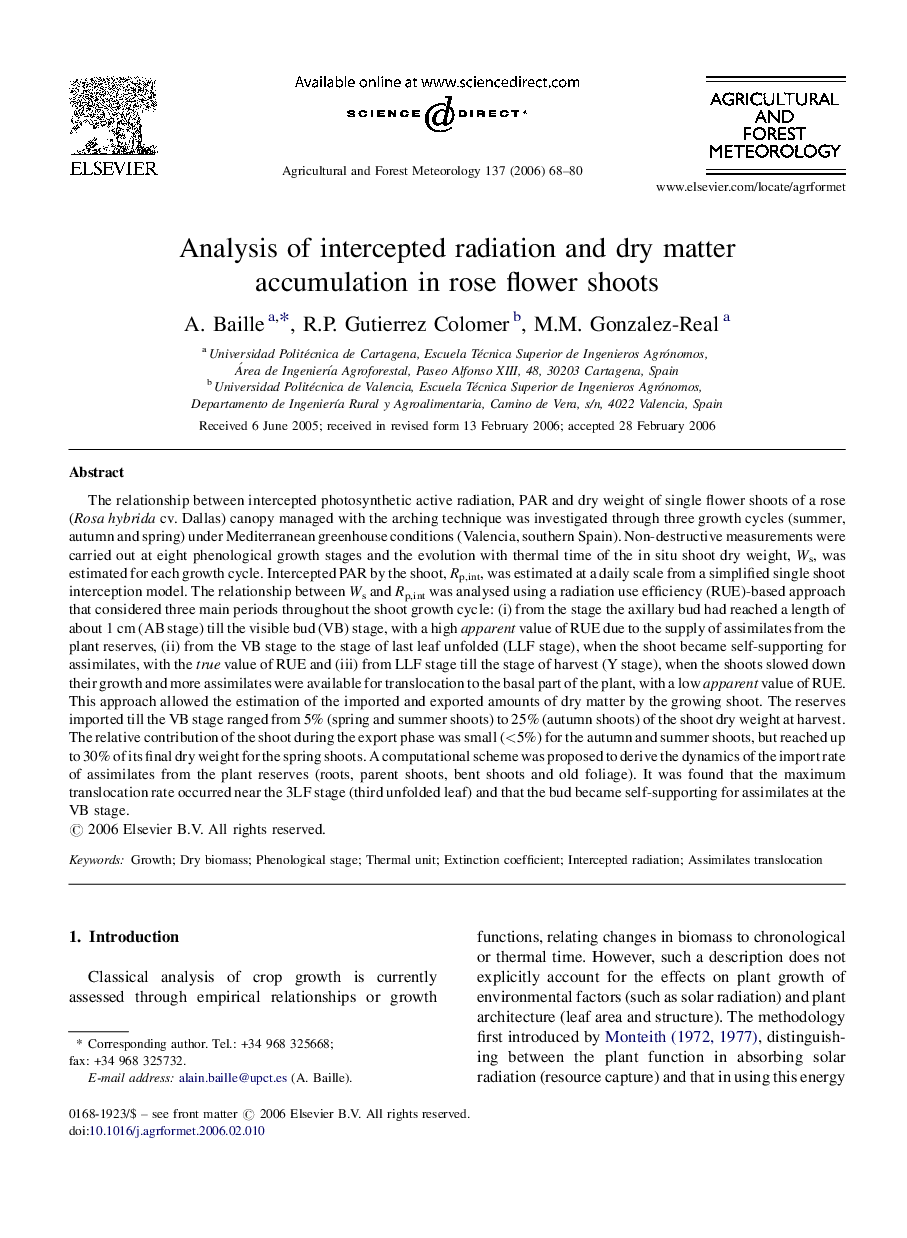| Article ID | Journal | Published Year | Pages | File Type |
|---|---|---|---|---|
| 83055 | Agricultural and Forest Meteorology | 2006 | 13 Pages |
The relationship between intercepted photosynthetic active radiation, PAR and dry weight of single flower shoots of a rose (Rosa hybrida cv. Dallas) canopy managed with the arching technique was investigated through three growth cycles (summer, autumn and spring) under Mediterranean greenhouse conditions (Valencia, southern Spain). Non-destructive measurements were carried out at eight phenological growth stages and the evolution with thermal time of the in situ shoot dry weight, Ws, was estimated for each growth cycle. Intercepted PAR by the shoot, Rp,int, was estimated at a daily scale from a simplified single shoot interception model. The relationship between Ws and Rp,int was analysed using a radiation use efficiency (RUE)-based approach that considered three main periods throughout the shoot growth cycle: (i) from the stage the axillary bud had reached a length of about 1 cm (AB stage) till the visible bud (VB) stage, with a high apparent value of RUE due to the supply of assimilates from the plant reserves, (ii) from the VB stage to the stage of last leaf unfolded (LLF stage), when the shoot became self-supporting for assimilates, with the true value of RUE and (iii) from LLF stage till the stage of harvest (Y stage), when the shoots slowed down their growth and more assimilates were available for translocation to the basal part of the plant, with a low apparent value of RUE. This approach allowed the estimation of the imported and exported amounts of dry matter by the growing shoot. The reserves imported till the VB stage ranged from 5% (spring and summer shoots) to 25% (autumn shoots) of the shoot dry weight at harvest. The relative contribution of the shoot during the export phase was small (<5%) for the autumn and summer shoots, but reached up to 30% of its final dry weight for the spring shoots. A computational scheme was proposed to derive the dynamics of the import rate of assimilates from the plant reserves (roots, parent shoots, bent shoots and old foliage). It was found that the maximum translocation rate occurred near the 3LF stage (third unfolded leaf) and that the bud became self-supporting for assimilates at the VB stage.
